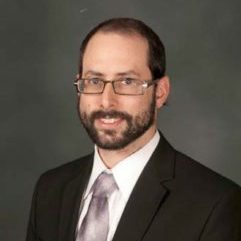Originally written on the passing of Rav Chaim Kanievsky, Zatzal
Rav Chaim Kanievsky lists four times in the Torah and three times in Nach that make use of the Shalsheles Trop. One is in this week’s Parsha.
The Shalsheles is a long, drawn out cantillation. Rav Chaim Kanievsky writes that he saw that every one of those seven instances denotes something that was drawn out longer than usual. In this week’s parsha the Shechita process for a Shelamim took longer than the shechita for any other sacrifice, because more blood was needed to apply to the thumbs and earlobes of the people bringing the sacrifice.
The final Shalsheles is found in the Book of Ezra in a letter written just after the Purim story to Daryavesh (Darius II), son of Achashveirosh and Esther.
The letter was from the community in Yerushalayim that had begun building the Second Beis Hamikdash in anticipation of the end of exile and our return to Eretz Yisroel. The Jewish leaders reminded him that eighteen years earlier Koreish (Cyrus) had tasked the prophet Daniel with bringing the vessels of the Bais Hamikdash to Yerushalayim for the reconstruction.
Rav Chaim gives us some historical context: Nebuchadnetzar destroyed the Beis Hamikdash. His son King Belshatzar eventually took over the Chaldean dynasty. He has a daughter named Vashti.
Several years before the Purim story, King Belshatzar became convinced that the Jewish people would never rebuild the Beis Hamikdash. He made a party at which he used the vessels of the Beis Hamikdash. In the middle of the party, strange writing appeared on the wall. Daniel was summoned to decipher the writing and he summarily told Balshaztzar that he had gone too far and that he would be punished. Belshayzar tried to appease Daniel by giving him royal robes and honor, but it was too late. He was assassinated that evening.
Cyrus, who was a Mede, immediately ascended to the throne. He was frightened by the writing on the wall and Daniel’s interpretation. He gave all of the holy vessels to Daniel and told him to take them to Yerushalayim. Cyrus also gave a permit to begin rebuilding the Beis Hamikdash.
Running around at that party was a little girl named Vashti. Cyrus had pity on Vashti and allowed her to marry Achashveiros – the stable boy. She was the last remnant of her grandfather Nevuchadnetzar’s dynasty.
Somehow, Achashveirosh became king over Persia, Mede, and by extension the entire world. His wife, Vashti, insisted that he cancel the permit allowing the building of Beis Hamikdash. Her family’s legacy hinged on keeping the Beis Hamikdash destroyed.
Achashveirosh went a step further. He too made a party and took out the vessels of the Beis Hamikdash. He told Vashti to come.
Vashti started to reminisce about her father’s party. She talked about how her father saw the writing on the wall and heard the words of the prophet Daniel, but didn’t flinch. He remained cool, calm, and collected. Achashveirosh, on the other hand, had no class and was in a panic over the Jews. She refused to come and she was killed, which was what she deserved anyways.
Eleven years later, Achashveirosh died, Daryavesh (Darius) reissued the building permit and the vessels were once again sent to Jerusalem. This is where the Shalsheles appears.
Rav Chaim points out that one could easily look at this story in a vacuum. A friendly king, who was apparently Jewish, rose up and helped us build the Beis Hamikdash. But that wasn’t really true. Eighteen years earlier a very scared king named Cyrus had instructed Daniel to rebuild the Beis Hamikdash. It just took Eighteen years. Those eighteen years involved multiple monarchs, permits granted and rescinded, Haman, Achashveirosh, and the entire Purim story. But in the background even Vashti knew that we were still in the middle of one long Shalsheles. One long chain of events that began with Daniel and would culminate with the Building of the Second Beis Hamikdash.
There is so much to learn from Rav Chaim Kanievsky, but perhaps more than anything was his understanding that we are just cogs in Hashem’s big plan. On the most unprecedented Erev Pesach of my lifetime, with the shuls closed, an unknown virus in the air, and everyone’s Pesach plans in shambles, Rav Chaim Kanievsky made a siyum on Shas and calmly sat down to begin again. He gave guidance and blessings and exercised caution, but his main message was clear: Torah is our life, and life goes on. He didn’t miss a beat.
May we all be Zoche to see the end of that Shalsheles with the rebuilding of the third Beis Hamikdash speedily in our days.


Beautiful. Lots of shalsheles already on way to third Bais Hamikdash, may they be more than enough and may we eat from the zevachim and pesachim BBA. Yasher koach